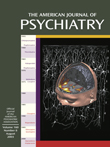About 30,000 deaths occur from suicide in the United States annually; 650,000 receive emergency treatment after an attempt. Worldwide, 1,000,000 people kill themselves each and every year. No wars during the past 50 years match that death rate, and yet they attract far more public attention and outcry. The mental health community is concerned about suicide, however. A cursory glance at the medical literature during the past decade reveals more than 13,000 publications and abstracts on the subject. Do we need yet another scientific study?
The very fact that suicide remains a major health problem worldwide shows that we are far from knowing all the answers. Despite the appearance of the excellent
Comprehensive Textbook of Suicidology published in 2000 and reviewed in the
Journal (1), there is room for
Reducing Suicide: A National Imperative. This fine book is published by the Institute of Medicine, which is greatly respected for the high quality of its publications. Not surprisingly, the three editors of the
Comprehensive Textbook of Suicidology are also contributors to this work. It certainly is on a level with all the reports from the Institute. The intention of this report is “to identify the next steps necessary to significantly reduce suicide, and within this task, discuss the most relevant information” (p. 21).
The report is composed of 13 sections consisting of an excellent executive summary, 11 chapters, and three appendixes. The chapters are titled “Introduction,” “Magnitude of the Problem,” “Psychiatric and Psychological Factors,” “Biological Factors,” “Childhood Trauma,” “Society and Culture,” “Medical and Psychotherapeutic Interventions,” “Programs for Suicide Prevention,” “Barriers to Effective Treatment and Intervention,” “Barriers to Research and Promising Approaches,” and “Findings and Recommendations.” The appendixes provide statistical details, a list of the consultants, and agendas of the workshops that contributed to the report.
The executive summary is extremely well prepared and packed with concise, relevant findings that will immediately appeal to the busy clinician when pressed to speak to professional and lay audiences about suicide. “Magnitude of the Problem” provides very quotable and important facts on geographic trends, populations at risk, race and ethnicity, incarcerated populations, occupations at risk, sexual orientation, limitations of data, and cost to society. “Psychiatric and Psychological Factors” covers psychiatric and substance use disorders and suicide risk as well as psychological dimensions of suicide risk. “Biological Factors” looks at the physiological stress system, neurochemistry, and genetic factors. “Childhood Trauma” examines childhood trauma as a risk factor, childhood sexual abuse and the risk for suicide, modifying factors, biopsychosocial effects of childhood trauma, childhood trauma as a risk factor for psychopathology, pathways to suicidality, and prevention and intervention. “Society and Culture” discusses a social safety net, society and culture in suicide, and the challenges.
In “Medical and Psychotherapeutic Interventions” the areas of assessment, psychoactive medications, ECT, psychotherapies, inpatient and follow-up care for suicidality, cultural considerations, and faith-based interventions are well covered. I found this chapter to be one of the most outstanding.
“Programs for Suicide Prevention” offers information about a framework for prevention, universal prevention, selective prevention, indicated prevention, and integrated approaches to prevention and assessing the effectiveness of prevention approaches. Again, this is a fine chapter. “Barriers to Effective Treatment and Intervention” talks about general, clinician, and patient barriers to treatment, barriers to treatment for high-risk groups, and global barriers. “Barriers to Research and Promising Approaches” examines methodology, surveillance of suicide and suicide attempts, ethics and safety, and research design and analysis issues. The report concludes with a summary containing discussions on enhancing the infrastructure, a database on suicide, the identification of those at risk for suicide, and prevention and interventions.
The strong points of this report are its surprising breadth of scope; clarity of expression; memorable quotes at the start of each section by famous clinicians, authors, philosophers and poets; illustrative clinical examples; abundant and well-chosen references; and superb editing. Each chapter follows a uniform format with findings listed at the end of the chapter, and each is concise and to the point. The book’s very minor “failings” are that the executive summary steals the thunder from some of the ensuing chapters, there is redundancy and some crossover in several chapters that belabor well-known findings and frequently quoted statistics about suicides, and, obviously, readers will find some chapters to be less comprehensive or relevant than others depending on their interest in the subject.
In conclusion, if you found the Comprehensive Textbook of Suicidology to be an indispensable addition to your professional mental health library, then you should grab Reducing Suicide: A National Imperative as the next logical step. This book should not be restricted to professional audiences; Internet news junkies will also love this report.

